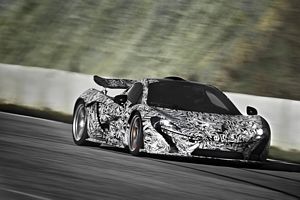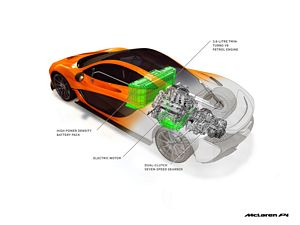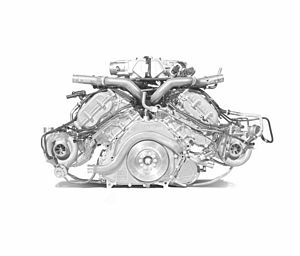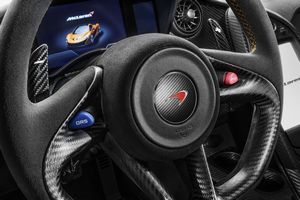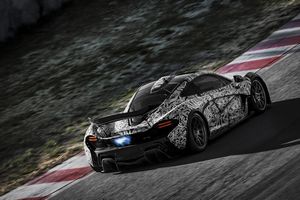|
By accessing or using The Crittenden Automotive Library™/CarsAndRacingStuff.com, you signify your agreement with the Terms of Use on our Legal Information page. Our Privacy Policy is also available there. |

McLaren P1 - technical specifications to die for
|
|---|
|
|
McLaren P1 - technical specifications to die for
Matt Hubbard
Speedmonkey
February 22, 2013
McLaren have revealed details of the drivetrain for their forthcoming £800,000 supercar, the P1
We already knew the McLaren P1 was going to be a groundbreaking car but the details recently revealed seem to confirm it's position as the tour de force of 2013's supercars. Porsche and Ferrari are going to have to work really hard top top this.
The headline power figure is an amazing 903bhp with 664 lb ft of torque from the combined 3.8 litre twin turbo V8 and electric motor. The petrol engine produces 727bhp and the electric motor 176bhp.
Not content with huge amounts of power the P1 emits less than 200g/km of CO2 - not something that normally bothers us but worth quoting due to it's amazing lowness. The electric motor will power the P1 for up to 10km. That means when Jenson Button drove the P1 to the MP4-28 launch on electric power he could theoretically have done so from Staines. But that would be silly.
As well as the two engines the P1 also features DRS and IPAS. DRS is familiar to Formula 1 fans as Drag Reduction System - an artificial concept in F1 that enhances overtaking opportunities, but a very real concept in the P1 that immediately reduces drag by 23% at the touch of a button. IPAS stands for Instant Power Assist System and is essentially 177bhp worth of boost via the electric motor that is stored in a lightweight battery pack. As soon as the driver comes off the throttle the batteries are recharged.
We're still reeling from that set of stats but McLaren deliver more. The electric motor is mounted directly onto the engine and drive is channelled through the dual-clutch seven-speed gearbox. The electric motor aids gearshifts by providing instant negative torque at the point of shift, making the engine revs drop quickly to the required speed for the upshift.
That is
so Ron Dennis.
The battery itself weighs only 96kg and is mounted on the underbody of the carbon fibre monocoque chassis - although McLaren call it a MonoCage chassis.
The McLaren P1 is the only car that can make the McLaren F1 seem old. We already know it will be capable of over 200mph and 0-60mph in under 3 seconds.
Lewis Hamilton must be gutted. He gets a front wheel drive CLA whilst Jenson Button gets a P1.

















